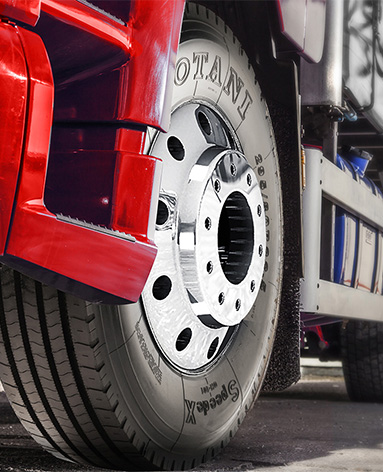Sep . 23, 2024 03:04 Back to list
drum brake drum
Understanding the Drum Brake System
Drum brakes are a crucial component of the braking system in many vehicles, particularly older models and some contemporary ones. They operate using a design that incorporates a drum, brake shoes, and various other elements that work in unison to slow down or stop the vehicle. Understanding how drum brakes function and their advantages and disadvantages can help drivers appreciate this essential vehicle component.
How Drum Brakes Work
The drum brake system consists of several key parts. At the heart of the system is the brake drum, which is typically made of cast iron or steel. This drum is attached to the wheel, and when the driver presses the brake pedal, hydraulic fluid is sent to the brake cylinder. This action pushes the brake shoes outward against the inner surface of the drum. The friction generated between the shoes and the drum creates the necessary resistance to slow down the vehicle.
One of the primary advantages of drum brakes is their design, which allows them to be more compact than disc brakes. This can lead to a lighter overall weight for the vehicle, which is beneficial for fuel efficiency and handling. Moreover, drum brakes often have a self-energizing effect during braking—in other words, as the brake shoes press against the drum, the rotation of the drum can help push the shoes further into contact with the drum, enhancing braking force.
Advantages of Drum Brakes
1. Cost-Effective Drum brake systems are generally less expensive to manufacture and install compared to disc brakes. This is one reason why they are commonly found in entry-level vehicles and older models.
drum brake drum

2. Effective in Certain Conditions Drum brakes can perform better than disc brakes in certain wet conditions because the design can shield the braking surface from water, maintaining friction.
3. Longer Service Life When properly maintained, drum brakes can have a longer lifespan than disc brakes, mainly due to their enclosed design, which protects components from dirt and moisture.
Disadvantages of Drum Brakes
Despite their benefits, drum brakes do come with some drawbacks. Heat dissipation is one of the major issues; drum brakes can overheat during extended use, leading to brake fade— a reduction in braking power. This can be particularly problematic during high-stress driving conditions such as mountainous terrain or during aggressive driving.
Another disadvantage is maintenance. Drum brakes can be more challenging to service compared to disc brakes, as the components are housed within the drum. This can make inspections and replacements more labor-intensive and time-consuming.
Conclusion
While drum brakes may not be as popular in modern performance vehicles, their reliability and cost-effectiveness ensure they remain relevant, especially in certain segments of the automotive market. Understanding how they work, along with their advantages and disadvantages, can help drivers make informed decisions regarding vehicle maintenance and upgrades. As automotive technology continues to evolve, new braking systems may emerge, but the fundamental concepts behind drum brakes will always be a vital part of automotive history. Whether in a vintage car or a budget-friendly model, drum brakes represent a unique blend of ingenuity and practicality.
-
Your Brake Drum Man: Quality & Performance Parts
NewsAug.21,2025
-
Explore Japan: Ultimate Travel Guide & Authentic Experiences
NewsAug.19,2025
-
Your Brake Drum Man: Premium & Reliable Brake Drums for Sale
NewsAug.18,2025
-
ROR Web Development: Build Fast, Scalable, Secure Apps
NewsAug.17,2025
-
Scania Brake Drums: OEM Quality for Optimal Safety & Durability
NewsAug.16,2025
-
R.V.I: Advanced Remote Visual Inspection for Precision
NewsAug.15,2025
